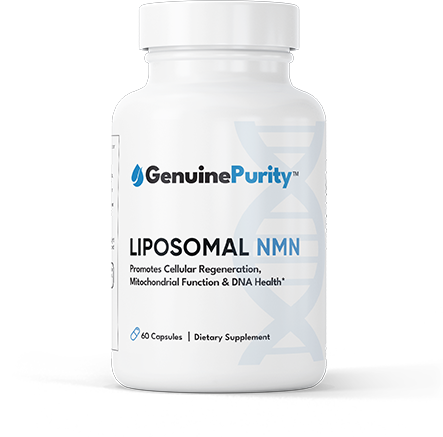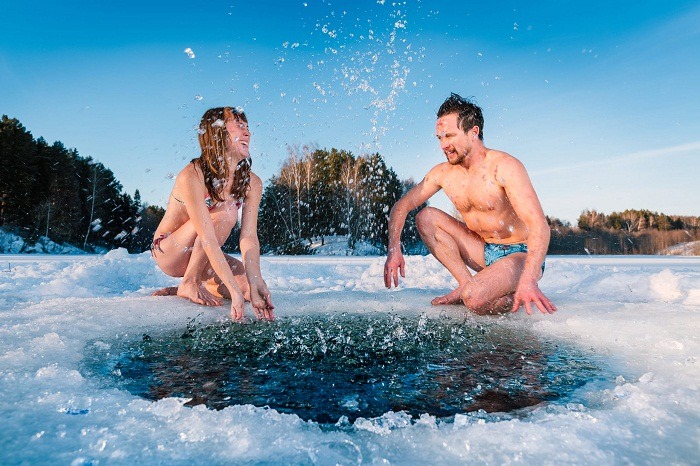What is an Ice Bath?
Contents
- 1 What is an Ice Bath?
- 2 Why Ice Baths are Gaining Popularity
- 3 Pros and Cons of Ice Bath
- 4 Benefits of Ice Baths
- 5 Side Effects of Ice Baths
- 6 Choosing the Right Ice Bath Setup
- 7 Setting Up Your Home Ice Bath
- 8 How to Use an Ice Bath
- 9 Targeted Ice Bath Techniques
- 10 Personal Experiences
- 11 Safety Tips and Precautions
- 12 Wrap-Up: Embracing the Chill for Optimal Recovery
- 13 References
- 14 Are ice baths good for you?
- 15 How long should I ice a bath?
- 16 What are the disadvantages of ice baths?
- 17 How to take an ice bath at home?
- 18 Is it OK to shower after an ice bath?
- 19 Is a 1 minute ice bath good?
- 20 Who shouldn’t do ice baths?
- 21 How many calories does a 10 minute cold bath burn?
- 22 Is it safe to ice bath alone?
- 23 What happens after 30 days of cold showers?
- 24 What to wear in an ice bath?
- 25 Do ice baths increase testosterone?
- 26 Is ice bath good for skin?
- 27 What is the science behind ice baths?
- 28 Can I ice bath at night?
- 29 How many minutes should I ice bath?
- 30 Why do I feel sleepy after an ice bath?
An ice bath is exactly what it sounds like—a bath filled with cold water and ice, designed to reduce muscle soreness and accelerate recovery. The concept of soaking in icy water might seem extreme, but athletes and fitness enthusiasts swear by its benefits.
Why Ice Baths are Gaining Popularity
Ice baths have recently gained a lot of attention, especially among athletes and fitness enthusiasts. It’s not just a trend; it’s a scientifically-backed method to help your body recover faster. With benefits ranging from reduced muscle inflammation to improved mental health, it’s no wonder people are jumping (or slowly easing) into this chilly practice.
Pros and Cons of Ice Bath
| Pros | Cons |
| Reduces Muscle Soreness and Inflammation | Risk of Hypothermia |
| Ice baths help decrease muscle soreness and inflammation by constricting blood vessels. | Prolonged exposure to cold water can dangerously lower the body’s core temperature. |
| Improves Recovery Time | Discomfort and Pain |
| Cold immersion helps flush out lactic acid and other waste products, speeding up recovery. | The initial shock and sustained cold can be extremely uncomfortable and even painful. |
| Boosts Mental Health | Potential for Skin and Nerve Damage |
| Cold water triggers the release of endorphins, elevating mood and reducing stress. | Extended exposure to cold can cause skin and nerve damage, including frostbite. |
| Enhances Circulation | Not Suitable for Everyone |
| Alternating between cold and warm temperatures can improve overall circulation. | Individuals with cardiovascular issues, cold allergies, or open wounds should avoid ice baths. |
| Reduces Risk of Injury | Temporary Effects |
| Regular use of ice baths can help prevent injuries by reducing inflammation and muscle soreness. | The benefits are often temporary and must be complemented with other recovery practices. |
GenuinePurity™

Liposomal NMN
- Boost Your Daily Energy
- Improve Cognitive Function
- Support Heart Health
- Rev-Up Your Metabolism
- Improve Sleep
- Support Stronger Joints
- Increase Muscle Strength
- Strengthen Immune System
- Increase Libido
- Improve Mood
Benefits of Ice Baths
Physical Recovery
One of the primary reasons people take ice baths is for physical recovery. After an intense workout, muscles are inflamed and sore. The cold temperature constricts blood vessels, which helps reduce inflammation and speeds up the healing process. It’s like giving your muscles a mini-vacation after they’ve worked hard.
Mental Health Benefits
Believe it or not, ice baths can also boost your mood. The shock of cold water triggers the release of endorphins, those feel-good hormones, which can help combat stress and anxiety. Plus, the sense of accomplishment after enduring a plunge is a mental win in itself. It’s like hitting a mental reset button, leaving you refreshed and ready to tackle whatever comes next.
Improved Circulation
Alternating between cold and warm temperatures can improve circulation. The cold water constricts blood vessels, and as your body warms up, they expand again, promoting healthy blood flow and oxygen delivery throughout the body. This process can help your body repair itself more efficiently and leave you feeling revitalized.
Side Effects of Ice Baths

While ice baths can be beneficial, they also come with potential side effects:
Hypothermia
Prolonged exposure to cold water can dangerously lower the body’s core temperature, leading to hypothermia. This can be life-threatening if not addressed immediately.
Frostbite
Extended periods in extremely cold water can cause frostbite, damaging the skin and underlying tissues. It’s crucial to monitor the duration of your ice bath to avoid this risk.
Cardiovascular Stress
Ice baths can put stress on the cardiovascular system. The cold water causes blood vessels to constrict, which can increase blood pressure and heart rate. Individuals with pre-existing heart conditions should avoid ice baths unless cleared by a healthcare provider.
Nerve Damage
Prolonged cold exposure can lead to nerve damage, resulting in numbness or tingling sensations. It’s important to limit the time spent in an ice bath to prevent this.
Respiratory Issues
The sudden exposure to cold water can cause rapid, shallow breathing or hyperventilation. This can be particularly dangerous for individuals with respiratory issues.
Cold Allergies
Some people may have cold allergies, which can cause reactions such as hives, swelling, and itching when exposed to cold temperatures.
Muscle Tightness
While ice baths are meant to reduce muscle soreness, the cold can initially cause muscle tightness and discomfort. It’s important to ease into the bath gradually to help mitigate this effect.
Choosing the Right Ice Bath Setup

Stock Tank
A stock tank is a large, durable container typically used for livestock, but it makes an excellent ice bath.
- Pros: Inexpensive, durable, spacious.
- Cons: Bulky, requires a lot of ice.
Stock tanks are popular because they are readily available and relatively cheap. They are robust and can hold a significant amount of water, making them perfect for full-body immersion.
Ice Pod and Icepod
Ice pods are specially designed tubs for cold plunges. They often come with insulation and drainage systems.
- Features: Insulated walls, built-in drain.
- Pros: Efficient, retains cold longer.
- Cons: Can be pricey, and requires more space.
These are ideal if you are looking for a more professional setup. The insulation helps maintain the cold temperature, reducing the amount of ice you need over time.
Ice Plunge Tub
These are professional-grade tubs specifically for cold water immersion. They can be found in many athletic facilities.
- Description: High-quality, durable, often with temperature control.
- Benefits: Reliable temperature control, optimal for frequent use.
Ice plunge tubs are the luxury option, offering features like precise temperature control and high durability. They’re perfect for those who take their recovery routines seriously.
Best Cold Plunge Tub Options
When it comes to the best cold plunge tubs, here are some top picks:
- The Cold Plunge
- Pros: Sleek design, precise temperature control.
- Cons: Expensive.
- Rubbermaid Stock Tank
- Pros: Affordable, widely available.
- Cons: Bulky, not as aesthetic.
- Ice Barrel
- Pros: Compact, insulated.
- Cons: Limited space.
Each of these options has its pros and cons, so consider what’s most important for you—be it price, ease of use, or how well it retains the cold.
Setting Up Your Home Ice Bath
Inflatable Cold Plunge
Inflatable cold plunge tubs are portable and easy to set up.
- Ease of Use: Simple to inflate and deflate, can be stored easily.
- Storage and Maintenance: Compact storage, easy to clean.
These are great for those who don’t have a lot of space. You can set it up when needed and store it away when you’re done.
Cold Plunge for Sale
Finding the right cold plunge tub for sale involves knowing where to look and what to look for.
- Finding the Best Deals: Check online retailers, sporting goods stores, and specialty fitness equipment stores.
- What to Look For: Durability, size, insulation, and ease of use.
When shopping, consider your budget, the space you have available, and how often you plan to use the tub.
DIY Home Ice Bath
If you’re on a budget, you can set up a DIY home ice bath.
- Materials Needed: Stock tank or large tub, ice, water, thermometer.
- Step-by-Step Guide:
- Fill the tank with cold water.
- Add ice until the water temperature reaches 50-59°F (10-15°C).
- Submerge yourself gradually.
DIY options can be just as effective if you’re willing to put in a bit of effort to get everything set up.
GenuinePurity™

Liposomal NMN
- Boost Your Daily Energy
- Improve Cognitive Function
- Support Heart Health
- Rev-Up Your Metabolism
- Improve Sleep
- Support Stronger Joints
- Increase Muscle Strength
- Strengthen Immune System
- Increase Libido
- Improve Mood
How to Use an Ice Bath
Preparing the Ice Bath
Make sure the water temperature is between 50-59°F (10-15°C) for optimal benefits. Start by filling your tub with cold water and then add ice until you reach the desired temperature.
Ideal Ice Bath Temp
The ideal ice bath temp is crucial. Too cold can be dangerous, while too warm won’t be effective. Aim for the sweet spot of 50-59°F (10-15°C). Use a thermometer to check the temperature before you get in.
Duration and Frequency
Stay in the ice bath for 10-15 minutes. Any longer, and you risk hypothermia. For best results, take an ice bath after intense workouts or a few times a week. Start with shorter durations and work your way up as your body adapts.
Targeted Ice Bath Techniques
Ice Bath for Feet
An ice bath for feet can be particularly beneficial for runners and those who are on their feet all day.
- Benefits: Reduces swelling, and soothes sore muscles.
- How to Do It: Fill a basin with cold water and ice, then soak your feet for 10-15 minutes.
This can be a great way to get the benefits of an ice bath without having to submerge your entire body.
Personal Experiences
My First Ice Bath Experience
My first ice bath was a shock, to say the least. I remember slowly lowering myself into the stock tank, my muscles tensing up as the cold water enveloped me. It was a battle of wills, but once I settled in, I could feel the benefits almost immediately. My soreness decreased, and I felt mentally invigorated.
Tips for Beginners
- Start slow: Begin with shorter durations and gradually increase.
- Use a timer: To avoid staying in too long.
- Have a warm blanket nearby: For when you get out.
My advice? Embrace the cold, but do it smartly. It can be tough at first, but the benefits are worth it.
Safety Tips and Precautions
Who Should Avoid Ice Baths
Ice baths aren’t for everyone. If you have cardiovascular issues, cold allergies, or open wounds, it’s best to avoid them.
Signs to Watch Out For
Look out for signs of hypothermia such as shivering, dizziness, and numbness. If you experience any of these, get out of the ice bath immediately. Always consult with a healthcare provider before starting a new recovery regimen.
Wrap-Up: Embracing the Chill for Optimal Recovery
Ice baths, while seemingly extreme, offer a myriad of benefits that can significantly enhance your recovery routine. Whether you’re an athlete, fitness enthusiast, or someone simply looking to improve your physical and mental well-being, incorporating ice baths can be a game-changer.
Key Takeaways:
- Physical Recovery: Ice baths help reduce muscle soreness and inflammation, speeding up the healing process after intense workouts.
- Mental Health Boost: The cold shock releases endorphins, helping to elevate your mood and reduce stress.
- Improved Circulation: Alternating between cold and warm temperatures promotes healthy blood flow and oxygen delivery throughout the body.
- Accessibility: Various setups, from DIY options to professional-grade tubs, make ice baths accessible to everyone, regardless of budget or space constraints.
Safety First: While the benefits are compelling, it’s crucial to approach ice baths with caution. Always monitor the temperature, duration, and your body’s response to avoid risks such as hypothermia, frostbite, and cardiovascular stress. Consulting with a healthcare provider before starting an ice bath regimen is advisable, especially if you have underlying health conditions.
Final Thoughts: Ice baths are more than just a trend—they are a scientifically-backed method to aid in recovery and enhance overall well-being. By starting slow, using the right equipment, and paying attention to your body’s signals, you can safely reap the benefits of this chilly practice. Whether you’re soaking your feet or taking the full plunge, ice baths can provide that refreshing boost your body and mind need to recover and thrive.
References
- Muscle Recovery and Soreness Reduction: Ice baths, or cold water immersion (CWI), are commonly used for muscle recovery after exercise. Studies have shown that CWI can reduce delayed onset muscle soreness (DOMS) compared to passive rest. This is attributed to the reduction in muscle inflammation and the constriction of blood vessels, which helps to flush out waste products like lactic acid from the tissues (EverydayHealth.com) (Frontiers).
- Performance in Athletes: Research involving highly-trained athletes, such as a study on Portuguese volleyball players, has indicated that regular ice baths can help in maintaining neuromuscular performance and reducing perceived muscle soreness during intense training periods. The study observed that athletes who used ice baths reported less fatigue and better overall wellness scores compared to those who did not (Frontiers).
- Inflammation and Pain Relief: Ice baths are also used in physical therapy to manage pain and inflammation. Cold water immersion can help in reducing swelling and inflammation in both acute injuries and chronic conditions. This is because cold temperatures cause blood vessels to constrict and reduce blood flow to the affected areas, which helps to minimize swelling and pain (EverydayHealth.com).
- Mood and Mental Health: There is evidence that cold water immersion can positively affect mood by increasing the levels of neurotransmitters like dopamine. A study noted that participants who regularly took ice baths experienced significant improvements in mood and reductions in stress and anxiety levels (EverydayHealth.com).
- Comparative Effectiveness: When compared to other cold therapies, such as whole-body cryotherapy, ice baths have been found to be more effective in certain contexts. For example, cold water immersion has been shown to lower muscle soreness more effectively than whole-body cryotherapy in some studies (EverydayHealth.com).
For more detailed information and additional studies, you can refer to these sources:
- Everyday Health – Cold Water Therapy
- Mayo Clinic – The Science Behind Ice Baths for Recovery
- Wikipedia – Ice Bath as Sports Therapy
- Healthline – Ice Bath Benefits
- Business Insider – Do Ice Baths Work?
Are ice baths good for you?
Ice baths have potential benefits like reducing muscle soreness and inflammation, but the research is mixed. They may also improve mood and sleep. However, there are risks, so talk to your doctor before trying one.
How long should I ice a bath?
For most people, 10-15 minutes is a safe range. Start shorter and work your way up if tolerated.
What are the disadvantages of ice baths?
They can be uncomfortable, and risky for some people with health conditions, and may not be effective for everyone.
How to take an ice bath at home?
Fill a bath with cold water and ice. Gradually enter the tub, ideally with a buddy for safety. Breathe deeply and relax for your chosen time.
Is it OK to shower after an ice bath?
Yes, a warm shower after can help you return to a normal body temperature comfortably.
Is a 1 minute ice bath good?
A minute may not be long enough to get the potential benefits. Start with a few minutes and see how you tolerate it.
Who shouldn’t do ice baths?
People with heart problems, high blood pressure, or certain other medical conditions should avoid them. Consult your doctor if unsure.
How many calories does a 10 minute cold bath burn?
The exact amount is debated, but it’s likely not significant for weight loss.
Is it safe to ice bath alone?
It’s best to have someone with you in case of emergencies due to the cold shock response.
What happens after 30 days of cold showers?
There isn’t enough research to say definitively, but some people report benefits like improved circulation and mood.
What to wear in an ice bath?
A swimsuit is optional, but most people wear one for comfort.
Do ice baths increase testosterone?
There’s no strong evidence for this.
Is ice bath good for skin?
It may temporarily tighten pores, but there’s no lasting benefit for overall skin health.
What is the science behind ice baths?
Cold water constricts blood vessels, reducing inflammation and potentially muscle soreness. When you get out, blood flow increases, which may aid recovery.
Can I ice bath at night?
Yes, but be aware it may make you sleepy.
How many minutes should I ice bath?
Start with 10-15 minutes and adjust based on your tolerance.
Why do I feel sleepy after an ice bath?
The cold activates the parasympathetic nervous system, which promotes relaxation and sleep.

